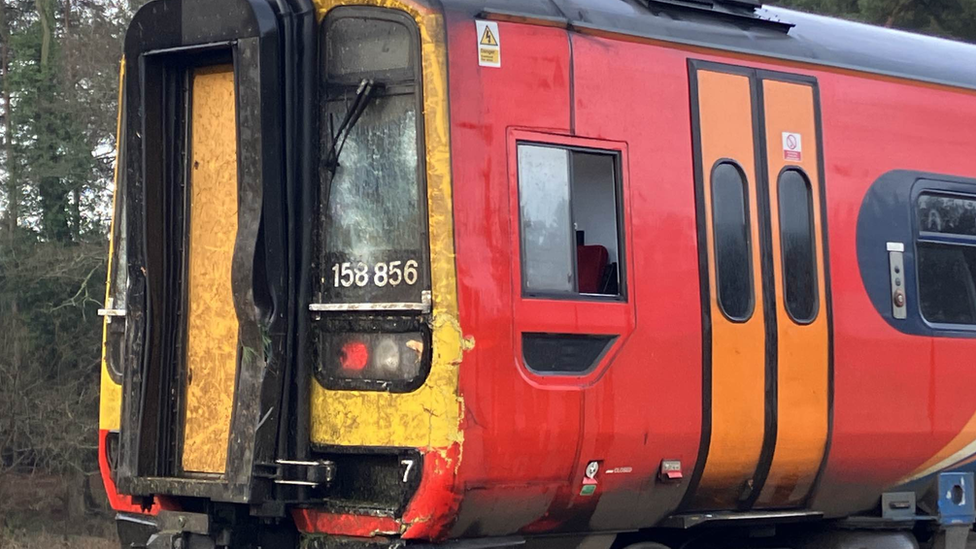Train travelled a further 680m after Thetford derailment - report
- Published
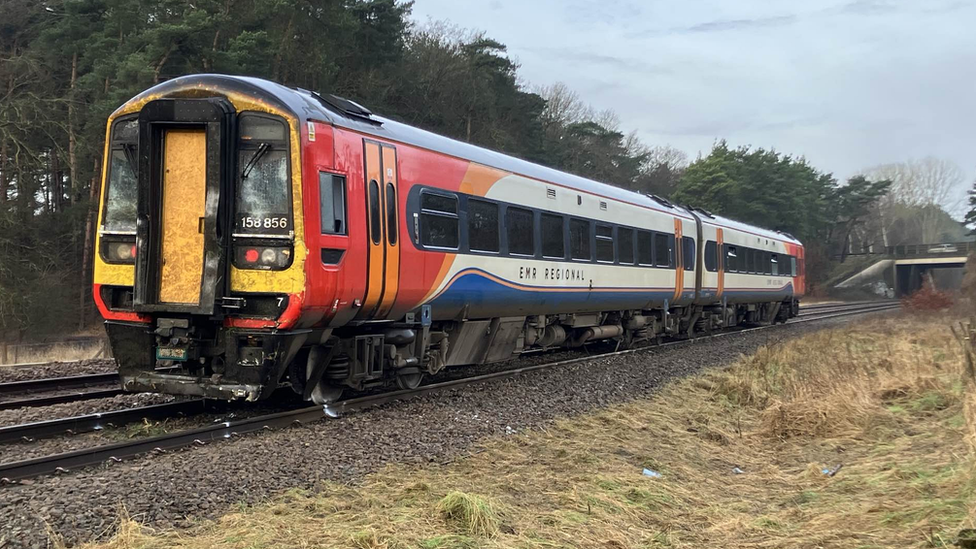
The damaged train pictured after the crash near Thetford on 6 February
A train that derailed after hitting fallen trees travelled several hundred metres before it stopped, an interim report found.
The Liverpool to Norwich East Midlands Railway service derailed just outside Thetford at 20:53 GMT on 6 February.
Initial findings by the Rail Accident Investigation Branch (RAIB) found the train travelled a further 680m (2,231ft) after the crash.
Two members of staff and 31 passengers were on board.
One person suffered minor injuries as a result of the incident.
East Midlands Railway said the two-carriage train partly came off the rails between Thetford and Harling Road, external in Norfolk, but that all passengers and staff were "safely evacuated from the train".
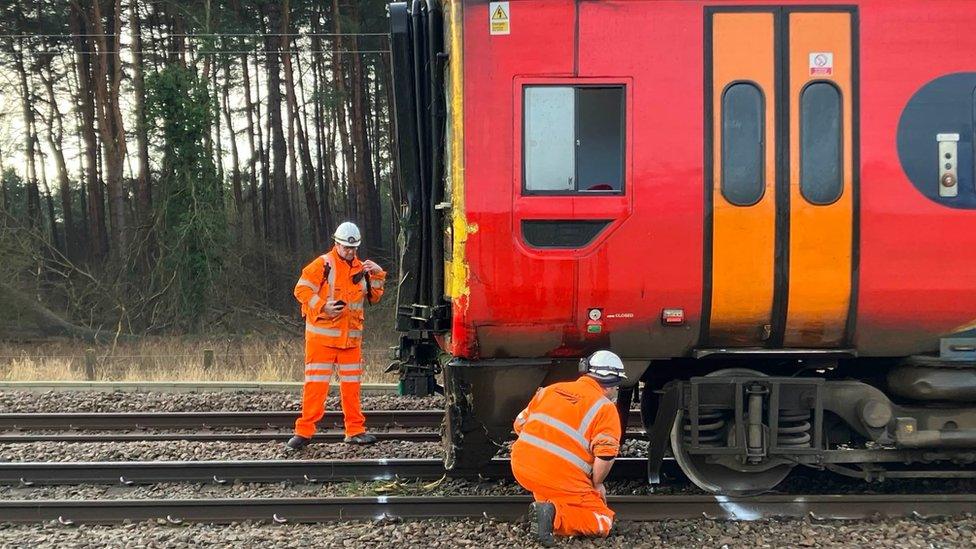
Engineers investigating the line after the crash
The interim report said the train, travelling at 83mph, had struck trees outside the railway boundary had fallen across the track, and the impact "caused the leading wheelset to derail".
It added: "It subsequently ran on the sleepers and ballast for around 680 metres before the train came to a stop, as a result of the driver's emergency brake application."
The report said the RAIB investigation would seek to identify the sequence of events that led to the accident.
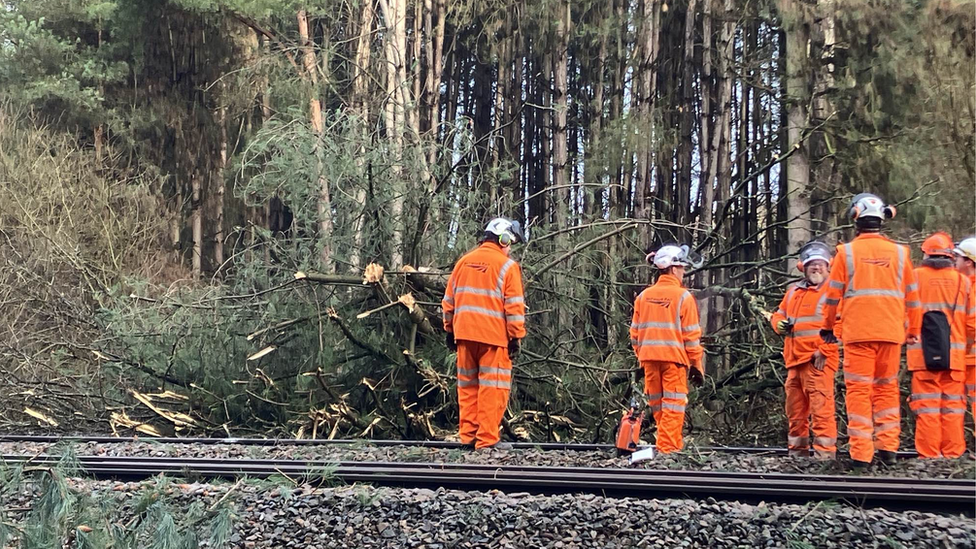
Trees were cut back in the area while investigations continued
It will also consider the management and control of risks from trees outside of railway land.
The investigation will also assess the "structural crashworthiness performance" of the cab and the performance of the train in remaining aligned with the track while running derailed.
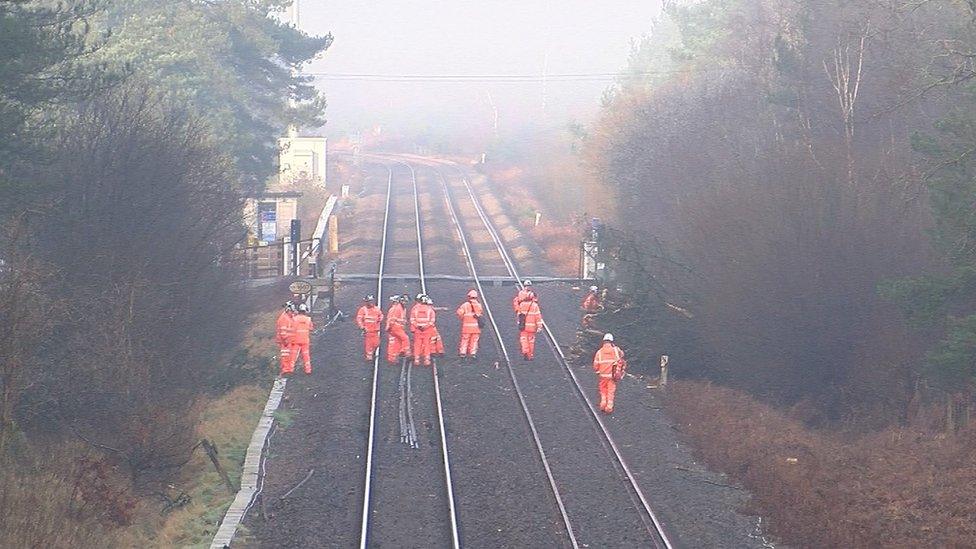
Engineers inspected the line which was closed off for some time after the derailment
At the time of the crash, Stephen Deaville, of Network Rail Anglia, said the company had an extensive vegetation management plan to keep trees away from tracks.
"It's always quite difficult to predict where a tree may randomly come down," he said.
"There are millions of trees next to our routes and it's not always possible to pick up every single tree which might be at risk, particularly if they've been weakened in recent storms."
The RAIB will publish its full findings at a later date.

Follow East of England news on Facebook, external, Instagram, external and X, external. Got a story? Email eastofenglandnews@bbc.co.uk, external or WhatsApp 0800 169 1830
Related topics
- Published8 February 2024

- Published7 February 2024
